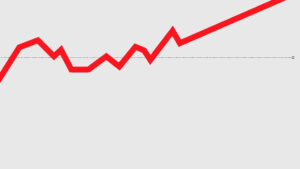Ag journalists started writing about consolidations in the seed industry 30 years ago, or so it seems. But the beat goes on. With special licensing agreements on specific traits, partnerships on unique genetics and ‘working agreements’ on biological genetic improvements for a variety of crops, will there be even more consolidations?
Thomas F. (Bud) Hughes, a partner in Verdant Partners, keeps his focus on the seed and crop genetics industry worldwide. His read is that the consolidation process is not slowing down; in fact, with certain crops in some parts of the world, business mergers and strategic alliances are likely accelerating—or just shifting gears.
“Consolidations move at different speeds across different industries, including agriculture,” notes Hughes “… but it also varies amongst crops. In that regard, major consolidation efforts within the U.S. corn industry have definitely slowed. A few corn deals are still happening in the United States while others may involve companies outside the U.S., especially in Europe, Latin America and parts of Asia.
“Moreover, seed consolidation and collaborative efforts have now moved into other crops such as sorghum, soybeans, wheat, turf grass, canola and more. Look at the headlines month after month—the bottom line is that the need for consolidation and strategic positioning never really ends,” says Hughes.
Greg Ruehle, chief executive officer of the Independent Professional Seed Association, thinks the outright acquisition phase of consolidations in the seed industry has slowed considerably. “What I think has not slowed is vertical integrations. These can be much less formal, but I see this trend continuing to impact the industry.”
He cites two reasons for these types of business agreements. “It’s expensive to take a new trait to the marketplace. It’s expensive to buy germplasm, as seed is the delivery mechanism for traits. It’s much easier to go to a major player who has germplasm in place and familiarity with cross-licensing agreements. These agreements can help provide access to a larger part of the marketplace.”
He credits the U.S. seed industry as being the global leader in genetic advancement, the successful integration of biotech traits into that germplasm, and the adoption of biotech products into the marketplace.
“But we’re not the only ones,” cautions Ruehle, mentioning some great R&D work in Southeast Asia and Europe. “What I see is the newer phenomenon of an increasing number of agreements between U.S. and international companies. This allows a trait developed elsewhere to be integrated into the pipeline of the U.S. seed industry. This is the best way of marrying together the two pieces needed to successfully launch that new product into international markets,” he says.
He suggests these agreements are the logical route for the introduction of new biotech traits into certain markets, providing the country is accepting of genetically engineered products. Ruehle says this could also be the door opener into the U.S. seed industry for traits developed in other countries with those GE products rather than being marketed back to the country where they originated.
Everyone in the seed industry recognizes seed is now a global business. Because of increasing world food concerns, both Ruehle and Hughes agree that the seed industry will keep expanding business alliances across the globe. Hughes indicates seed improvements derived from biotechnology have been the primary driver of recent consolidations.
“Today, many different technologies are adding value to a wide range of crops. As investments in genomics, biotech and advanced breeding keep improving the genetics of different crops, those investments are also driving consolidations. We see it in crop after crop,” says Hughes. “Vegetable deals will continue to roll along as well, but I believe the real energy there will come when technology is developed to enable step-change improvements in the quality and nutritional value of fresh produce.”
He notes almost 400 million acres of biotech crops were planted worldwide in 2011. “And the largest rate of gain was in developing countries. So you can sense that more crops with more technology in more countries will generate more consolidations.” However, Hughes projects corn will be the most valuable seed in the world market for some time.
Tray Thomas at The Context Network adds, “There is plenty of acquisition and consolidation activity outside of North America; in fact, consolidation is just beginning to heat up in some areas of the world. In North America, however, consolidation has slowed considerably.
“The big companies have made the big deals. There’s just fewer of the smaller guys left, and most of them want to remain independent. Some, however, are looking for opportunities to collaborate with other smaller seed firms to become big enough to be relevant to the trait suppliers. Many of these arrangements are already in place, but room for this type of consolidation still exists for some,” says Thomas.
“The point being that if you are only a 25,000-bag seed firm, you don’t have much of a bargaining chip; however, if you combine with eight other similar-sized firms then you have 200,000 units of potential. That volume can generate some trait and genetic conversation. That’s smart business and provides better access for those involved,” he says. “Overall, there aren’t many acquisitions left to be made in the U.S. Now it’s sort of consortium-building time amongst the smaller seed companies. There may still be a big deal to happen, but most of the big deals are now in place.”
Andy LaVigne, president of the American Seed Trade Association, agrees that mergers and consolidations are now fewer. “But you continue to see some of this business activity for various reasons, be it access to specific marketing areas or simply a great diversity opportunity for products into the marketplace. We see that new relationships facilitate production of particular seed products, especially in vegetable seeds. Also, with world trade and specific licensing agreements much more doable, it represents new expansion opportunities for several seed companies.
“We’re seeing more seed relationships between North and South America, especially between the U.S., Chile, Brazil and Argentina. Also I sense much more activity between U.S. and European trait developers in vegetable seed businesses. Vegetables are so diverse and essentially produced throughout the world. Beets are another crop with developing global interests,” says LaVigne.
Not surprisingly, he says a strong and responsive farm bill is the number one Congressional priority of ASTA. However, a major challenge in the U.S. Senate is passage of the International Treaty on Plant Genetic Resources for Food and Agriculture. “We’re trying to build a framework for all countries for a better understanding of how seed and germplasm will be moved globally, and how companies who have developed this germplasm will be compensated when it moves into global markets,” says LaVigne, indicating this has been a long-term process. “Unfortunately, treaties in general are not popular with our U.S. Senate,” he says.
Outside Money in Seed Genetics
As the financial stakes in the seed industry continue to ramp up, will ‘non-ag’ capital start seeking a piece of the action via investment funding with selected seed industry fi
rms?
Hughes cuts to the quick, saying investors are always looking for a place to put their money where it will grow. And many investors are now realizing agriculture is one of the bigger growth industries in America. Private equity has always been a player in agriculture. However, Hughes believes the biggest driver in seed industry consolidations in the immediate future will be capital from strategic investors.
“Crop genetics is a research-driven business, however, very few investors outside of agriculture have the patience to sit around and wait for R&D to turn out products for the marketplace. Most investors want to see positive financial growth within five years, but in crop technology a 10-year window is more appropriate for measuring return on investment. So those with the most to gain are strategic investors that are already in the business, like Monsanto, Dow AgroSciences and DuPont,” says Hughes.
Other possible strategic investors are companies with deep pockets, such as global energy companies looking for new feedstock crops for renewable energy. Or food companies who monitor changes in consumer preferences and are looking for ways to tie the quality and profitability of their finished products on the food shelf back to the raw ingredients coming from the farm.
Ruehle recently asked an investment friend where money is going these days. The investment broker told him considerable investment money is heading right back to U.S. agriculture, specifically the seed industry. And why this new interest? “Because the seed industry is at the cutting edge of virtually all agricultural business. I see definite interest in the investment community of being a more active participant in the seed industry. There are a lot of smart people out there who know this is now a multibillion-dollar global business,” says Ruehle.
In 2011, almost 400 million acres of biotech crops were planted worldwide with the largest rate of gain in developing countries.
How do smaller, family-owned seed companies survive this financially-driven competition? Hughes offers sage advice. “You pick your battles. A number of companies can take on the ‘giants’ on a crop-by-crop basis in selected markets. But for most, it just simply requires too many resources to compete head-to-head across all markets.
“A private company must recognize where its strengths lie—a production company, a marketing company or a breeding company. Few companies anymore have expertise in all three functions. Many regional companies are excellent brand marketers, but typically in a limited range of crops and geography. Some small technology shops are able to be successful developing new technologies even though they have no means to bring products to market. The big companies try to be good at everything but seldom really are. So find those niche opportunities and simply work harder to compete in those niches.
“But that said, all companies working in crops or markets that are impacted by technology are eventually going to require some sort of collaboration with a technology provider. And that can be the most important step a private company takes. You may think you can do it on your own but the reality today is that is getting harder to do every year,” says Hughes.
Brand Loyalty Today
So is brand loyalty still functioning in the marketplace? Or because of all the ‘new arrangements’ going on within the seed industry, are farmers even concerned about brand anymore?
“They should be and I think they still are,” says Hughes. He notes that ‘brand loyalty’ covers several issues but even as the world of agriculture changes, farmers still do business person to person. “Brand reliability based around good customer service and finding the right products for each farm are still fundamental in the seed business,” he says, adding that most growers today buy from more than one seed supplier so ‘blind allegiance’ simply doesn’t work in the market, and shouldn’t.
“There is still loyalty on a brand-name basis,” comments Ruehle. “Yes, farmers recognize tremendous advancement in genetic performance and biotech traits that help preserve the yield potential for that crop, but you can’t put customer service into that bag of seed. That gets delivered outside the bag. And that will always be the advantage of a regional company. They’re not just visiting the marketplace; they’re living it 365 days of the year. They see that customer in church, at a school function, at the local coffee shop. That vital relationship disappears with too much consolidation.”
How to survive in this intense big money game? It’s a tough crystal ball to read, ventures Ruehle. “Genetic performance is like table stakes in this poker game. Plus you’ve got to provide the latest in cutting-edge traits. Thankfully, we are seeing more broad licensing arrangements today. However, you still have to provide a level of customer service that sets you apart from your national brand competitors.”
Dick Hagen
|
Seed Outlook Thomas F. (Bud) Hughes, a partner in Verdant Partners, says there will be enough seed for the 2013 crop year despite below normal yields in many seed production areas. He indicates that most seed companies increased their seed acres this year, plus winter production will be significantly higher in South America and elsewhere. “With these prices the American seed industry is facing a very dynamic market. But even with more corn acres being planted in 2013, I believe the seed industry will meet the challenge. Some specific new products may be limited, but we don’t spend years developing products and market share so that we can run out of seed to sell,” says Hughes. “The numbers I hear on seed yield range from 60 to 80 percent of normal, even under irrigation. But you can’t irrigate away heat damage and that’s why the lower yields, even when water was applied,” says Greg Ruehle, chief executive officer of the Independent Professional Seed Association. “The bigger question right now is, how much more did seed companies plant “And the third variable is how many acres of corn will be planted next year? We won’t know until the planters start rolling. Logic suggests there will be as many acres planted as there is seed to plant those acres. It’s a hot commodity with no evidence of slowing down soon,” says Ruehle. |
















